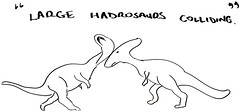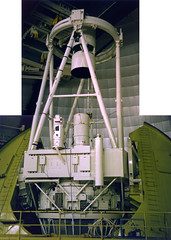

|
Archive
Blog
Cast
Forum
RSS
Books!
Poll Results
About
Search
Fan Art
Podcast
More Stuff
Random
Support on Patreon |
|
New comics Mon-Fri; reruns Sat-Sun
|
1 {photo of an old piano}
1 Caption: Musical Genres
|
First (1) | Previous (3206) | Next (3208) || Latest Rerun (2582) |
Latest New (5177) First 5 | Previous 5 | Next 5 | Latest 5 Annotations theme: First | Previous | Next | Latest || First 5 | Previous 5 | Next 5 | Latest 5 This strip's permanent URL: http://www.irregularwebcomic.net/3207.html
Annotations off: turn on
Annotations on: turn off
|
 Get your music in San Francisco! |
Anyway, you can also apply a genre tag to songs, and iTunes (and the iPad) has these nifty genre icons which appear when you view songs by genre[1]. However the set of genre icons is a bit limited. There are icons for Rock, and Pop, and Classical, and Jazz, and Latin, and Comedy, and New Age, and Soundtracks, and so on. But there are no icons for Swing, or Musicals, or Baroque, or what have you.
I made a blog post some time ago commenting on what genres I use to classify my music, how many songs I have in each genre, and lamenting the lack of easily customisable genre icons for many music genres[2]. Some people were interested, but one person posted a comment stating that he didn't know how anyone could possibly find music genres useful at all. "How do you even decide what genre stuff is?"
 Machu Picchu, Peru. Is this rock, or is it Latin? |
Certainly I have trouble classifying some of my music into the 20 or so genre tags I've decided to use, but by no means most of it. It's only a handful of artists that cause me to waver a bit, before I pick what I think fits best and am done with it. And the categorisations I end up with are indeed useful to me. I can separate out my soundtracks from other music, and I find that useful sometimes.
I'm sure there are people who think of music genres as too ill-defined and overlapping to be of much use, or even of any use whatsoever, as evidenced by the commenter on my blog post. What interests me is where this opinion comes from and why it's so different from my own. If I was being absolutist and assertive I could say something like, "How can those people think that? Obviously it's simple to tell rock music from classical music from country music from music that comes from a stage musical. How can they possibly think music genres are impossible to use and have no point?" But around the fringes of my own certitude there are those songs that I dithered between classifying as jazz or swing, or between pop and new age, or even between rock and Latin and folk music[3].
 Yellow, red, or green? Shoehorn it in! |
Nevertheless, classifying things is something humans like to do. We absolutely love sorting things into groups and putting labels on them. Fruit or vegetable? Fiction or non-fiction? Bird or bug? Planet or dwarf planet? Landscape or portrait? Smooth or crunchy? Full strength or light? Safe or banned? Good player or bad player? Classical or rock?
 Action, or comedy? |
I've often been annoyed when browsing in a shop for DVDs (or video tapes, back in the day), when they separate the movies by genre. If I'm looking for that action-comedy film... should I be looking in "Action" or "Comedy"? Why don't they just stick all the movies in one big alphabetical section, and then I can easily find exactly what I want? At least that's my experience when I buy a DVD - I'm usually looking for a specific title. For other people, who are just browsing and hoping to find something that appeals to them, it might make sense to search through a smaller section of just comedies, because they're not interested in action or horror films right now. So what suits one person doesn't necessarily suit another. And some things, like documentaries and music videos, I definitely want separated from movies. The real trick is knowing when a classification is useful and when it's getting in the way.
Classifying is not all bad. Often, it's the first step to understanding, and can lead to deep insights. This has often been the case in various fields of science.
 Sky globe showing constellations. |
For over another thousand years, we had no better way to classify stars. That changed with Galileo in the early 17th century, when he turned the newly invented telescope to the heavens and observed things that had previously been hidden from our weak eyes. Ptolemy, back in his Almagest, had noted five stars as "nebulous", meaning "cloudy". These were stars that looked a little bit smudgy on the sky, rather than being hard pinpoints of twinkling light. Alas, without the help of telescopes, it was impossible to make out anything more about them. During the 18th century, the number of known nebulae, as they became known, rose from 6, to a hundred, then over a thousand, mostly due to the work of the brother-sister team of William and Caroline Herschel[4]. William initially believed these nebulae were simply groups of stars too faint and close together to resolve as separate stars with his telescope. But he was convinced otherwise when they found a nebulosity with a single prominent star embedded within it, which seemed to indicate a star with a cloud around it, rather than a group of faint stars.
 Anglo-Australian Telescope, Coonabarabran. |
But now the secrets of the stars and nebulae were being unlocked, with advances made in other sciences here on Earth, mainly to do with the physics of atoms (told you!). Finally, in the 20th century, almost exactly 100 years ago, came the breakthroughs that allowed us to understand what stars really were and why their properties fell into the various classes that had been designated. And a dozen or so years after that an analogous breakthrough was made for nebulae. Now, in the 21st century, we have a very good understanding of the physics behind stars and nebulae. We know where they came from, what they're made of, how they form, how they change over their lifetimes, how they die, and what they leave behind afterwards. The classification of stars, points of light in the sky that we initially divided into six groups based only on their brightness, has become deep knowledge. What's more, it is knowledge that would have been harder to come by, perhaps even virtually impossible to have figured out, if we had never classified the stars into different groups at all.
Similar stories can be repeated across any science you care to name. Early geologists had no idea how rocks formed, but they could examine them and classify them into groups based on similarities of structure, physical properties, or where they were found. Studying the similarities within groups and the differences between groups of rocks led—slowly, but surely—to understanding that rocks like granite and basalt are formed from solidified magma, while sandstone and shale are formed from compressed mud or sand. Classification led to understanding and knowledge.
 Swallow-tailed gull. |
The path to knowledge often begins with classification.
Returning to the initial theme of this annotation (rather than its variations), what do we gain by classifying music into genres? Some people might truly gain nothing. But then a lot of people in Ancient Greece really didn't care how bright the various stars were either. I, personally, gain a working system of organising my music that suits my purposes. Ancient Greek sailors would have found a classification of stars into a few different brightness classes a useful aid in their recognition of star patterns and navigation. And to extend the analogy to the next level, a few people used the classification of stars as a stepladder to further study and the uncovering of deep knowledge about how stars work. I reckon there are people in the world who study music, the relations between different types of music, the cross-pollinations between them, and that these studies lead to new and fundamental insights into the place music has in human society, or to new inventive musical compositions that cross genres (and cause problems for those of us using iTunes). And these new cross-genre musical forms might never have been inspired if nobody had ever thought to classify music into those genres in the first place. The classification may not be perfect, but it opens up ways of thinking about things.
Now, what is the topic of this annotation?
EDIT: Several people have written to discuss the theme of musical genres. Most of them have agreed with the sentiment that musical genres are pretty useless. Some even suggest there is a fundamental reason for this: stars and rocks and life forms have intrinsic, objective relationships between them, that make classifying them into groups a sensible thing to do. Whereas, these readers argue, music is a human-made edifice of completely artificial construction, with relationships defined only by our own fallible subjectivity. Ergo, genres can only ever be groupings overlaid by our own minds, rather than anything intrinsic to the music.
A somewhat convincing argument! However, I can still tell the difference between a classical work and a rock song. And I like having them easily separated. I think the gist of the argument is that some people find music genres useful, and others don't, and never the twain shall meet.
Others have suggested that mutually exclusive genres, as enforced by iTunes, is the problem. In iTunes, a song is either rock, or it's jazz, or it's from a soundtrack. It can't be all three. Maybe it should be allowed to be all three. Instead of mutually exclusive genre labels, have a tagging system instead, where you can label those Andean pipe covers of Beatles songs as rock and folk and Latin. That would indeed be useful, I think.
And of course there are people who study music, including the commonalities and differences between different styles of music, and who come up with new and interesting blends of styles from all over the world. They're called ethnomusicologists. Or in some cases, composers and artists. :-)
Finally, some links: TV Tropes' word on the matter, and an essay by a guy on Interstitial Arts (Artists Without Borders) on categorising music.
[2] Apparently you can customise the genre icons, but it involves jailbreaking your iPad and messing about with the guts of code that frankly I couldn't be bothered doing.
[3] While in Peru earlier this year I picked up some CDs of an Andean pipe band playing instrumental covers of Beatles songs with a Latin beat. Genre-bending indeed.
[4] William Herschel is probably more famous as the discoverer of the planet Uranus, the first planet to be discovered since ancient times. Upon discovering the planet, Herschel's first instinct was to flatter his adopted liege, King George III of England (Herschel was born in Germany, but moved to England in his teens). He therefore chose to name the new planet Georgium Sidus ("George's Star"). Perhaps fortunately, this name was understandably unpopular outside England and the German astronomer Johann Bode proposed naming it Uranus, after the mythological father of Saturn (the former furthest known planet). This suggestion quickly took hold, although His Majesty's Nautical Almanac Office continued to call the planet Georgium Sidus for the next 69 years, giving up the ghost only in 1850.
|
LEGO® is a registered trademark of the LEGO Group of companies,
which does not sponsor, authorise, or endorse this site. This material is presented in accordance with the LEGO® Fair Play Guidelines. |